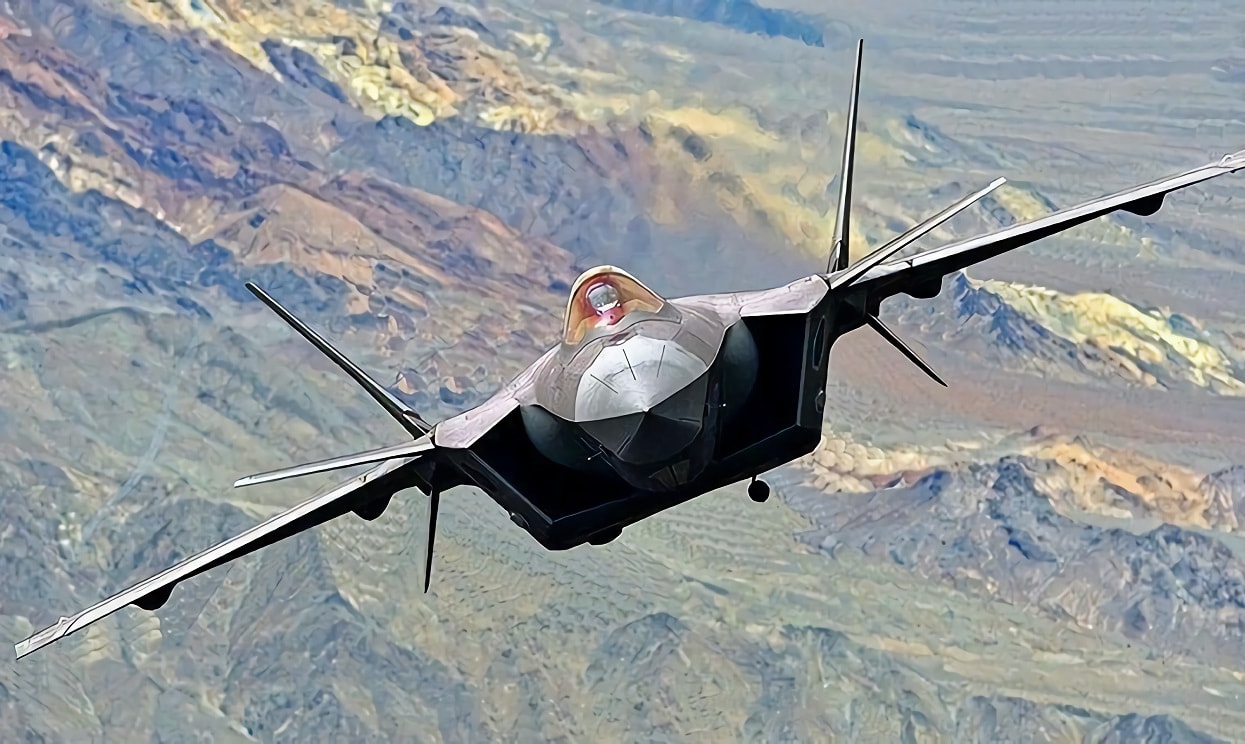J-20S Stealth Fighter, What We Know So Far: On October 26, grainy images of what appeared to be China’s—and the world’s—first two-seat stealth fighter coated in yellow primer surfaced on social media, seemingly showing a Chengdu J-20 stealth fighter with an elongated canopy for a “back-seater.”
Development of a two-seat variant of the J-20 Mighty Dragon stealth fighter had been hinted for a while, with reports in Chinese media in summer of 2020, albeit supported by a graphic dubiously suggesting a side-by-side seating arrangement. But the new photos seemed genuine, and the viral marketing technique of ‘leaking’ images onto social media is a favored tactic of China’s military-industrial complex. However, convincing fakes by enthusiasts are widely circulated as well.
But a week later, additional images and a video of the tandem two-seat jet with serial numbers 2031 discernable taxiing at the Chengdu’s corporation’s aircraft plant seemingly confirmed the two-seat fighter’s existence.
Finally, on November 5 images showed the two-seat J-20, likely designated the J-20S or J-20AS, making allegedly its maiden flight. Footage of that flight emerged on November 13, which you can watch here. You can also see a very clear frontal aspect photo here revealing the two-seaters modified air intakes.
Two-seat variants of single-seat fighters are quite common. In many cases, the rear seat is used by an instructor with a full set of control so they can take over from the trainee pilot in the front in an emergency. There are also multi-role jets like the F-15E Strike Eagle, EA-18G Growler, and Su-30 Flanker in which the back seat is occupied by a Weapon Systems Officer (WSO) who manages sensors and guided weapons, allowing the pilot to concentrate on flying.
However, until now no country has created a two-seat stealth fighter, as the modifications involved in stretching a stealth fighter for the second seat while seeking to preserve its stealthy geometry were presumably deemed too expensive, while more advanced training simulators were seen as an acceptable substitute. Even with simulators, though, roughly one-third of the U.S. Air Force’s F-22 Raptor stealth fighter fleet is assigned to training roles.
Training or Combat?
Western two-seat conversion training jets are often combat-capable, so it may be wrong to think of the trainer vs operational role as an exclusive issue. Nonetheless, there remains much speculation as to what extent the J-20S is aimed at assisting J-20 pilot training, versus providing enhanced operational capabilities to the J-20 fleet.
Rick Joe, who comments on Chinese military technology for The Diplomat, has pointed out that the back seat on the J-20S doesn’t appear to be raised so the backseater can see over the pilot’s head, a common design element on trainer jets that affords the instructor a better field of view should they need to take control. A raised rear seat is evident in two-seat combat-capable trainers including the Chengdu/PAC JF-17B, Chengdu J-10S, and Shenyang J-11BS and J-15S combat-capable jet trainers. This, Joe argues, hints at an emphasis on enhanced combat roles for the J-20S.
However, it’s also possible the lack of leveling could be driven by considerations related to maintaining a minimal radar cross-section.
David Cenciotti at the Aviationist, meanwhile, argues “Considered that the most modern aircraft are much easier to handle than the previous generations ones, the only benefits of a training variant would almost be negligible.” The Drive’s Tyler Rogoway conversely asserts the “clear training advantages of having a two-seat variant of any aircraft,” even if the rear seat doesn’t have full flight controls.
Despite the greater cost and slightly reduced kinematic performance, there are undoubtedly several operational roles a two-seat J-20 could perform better—most obviously those involving operations of long-range sensors and employing guided air-to-surface weapons.
But furthermore, a Weapons Systems Officer (WSO) on a J-20 could in theory help network the aircraft’s sensors and communication systems from a relatively forward vantage in contested airspace to help coordinate intercepts and cue long-range air-to-air and anti-ship missile attacks.
Similarly, the aircraft’s expanded capacity as a command-and-control hub could particularly apply to drone control—or. manned-unmanned teaming (MUM-T)—with the back-seater alleviating the potentially excessive task loads on the pilot.
Indeed, at the Zhuhai airshow in 2021, the China Aerospace Science and Technology Corporation unveiled its concept for a long-range FH-97 Loyal Wingman-style drones designed to accompany jet fighters into combat, undertaking risky weapons delivery and active-sensing tasks while diverting enemy fire if necessary.
Such ‘attritable’ unmanned aircraft, already well under development in Western and Russian aerospace sectors, may not be stealthy nor capable of supersonic flight, but are expected to cost less than one-tenth the price of a traditional jet fighter, and could be put at risk to enhance a stealth fighter’s sensor and attack opportunities while keeping the manned jet out of harm’s way.
Aviation engineers eventually hope extensive onboard artificial intelligence, voice command interfaces, and perhaps more redundant satellite datalinks to ground controllers may simplify drone control tasks to the point that single-seat sixth-generation fighters will remain viable drone and precision weapon platforms.
But as air forces are only beginning to test fly Loyal Wingmen and develop doctrine for their use, two-seat jets may remain an attractive platform for testing and developing doctrine for their employment.
The development of a flying J-20S shows China can afford to develop specialized but potentially rewarding variants of its stealth fighter even as it simultaneously seeks major upgrades to the type’s engines and induct a new J-35 stealth fighter for service on People’s Liberation Army (PLA) Navy carriers. For now, Chinese aviation observers must await further evidence to gain a clearer picture as to plans to employ its unique two-seat stealth fighters.
Sébastien Roblin writes on the technical, historical and political aspects of international security and conflict for publications including The National Interest, NBC News, Forbes.com and War is Boring. He holds a Master’s degree from Georgetown University and served with the Peace Corps in China. You can follow his articles on Twitter.

